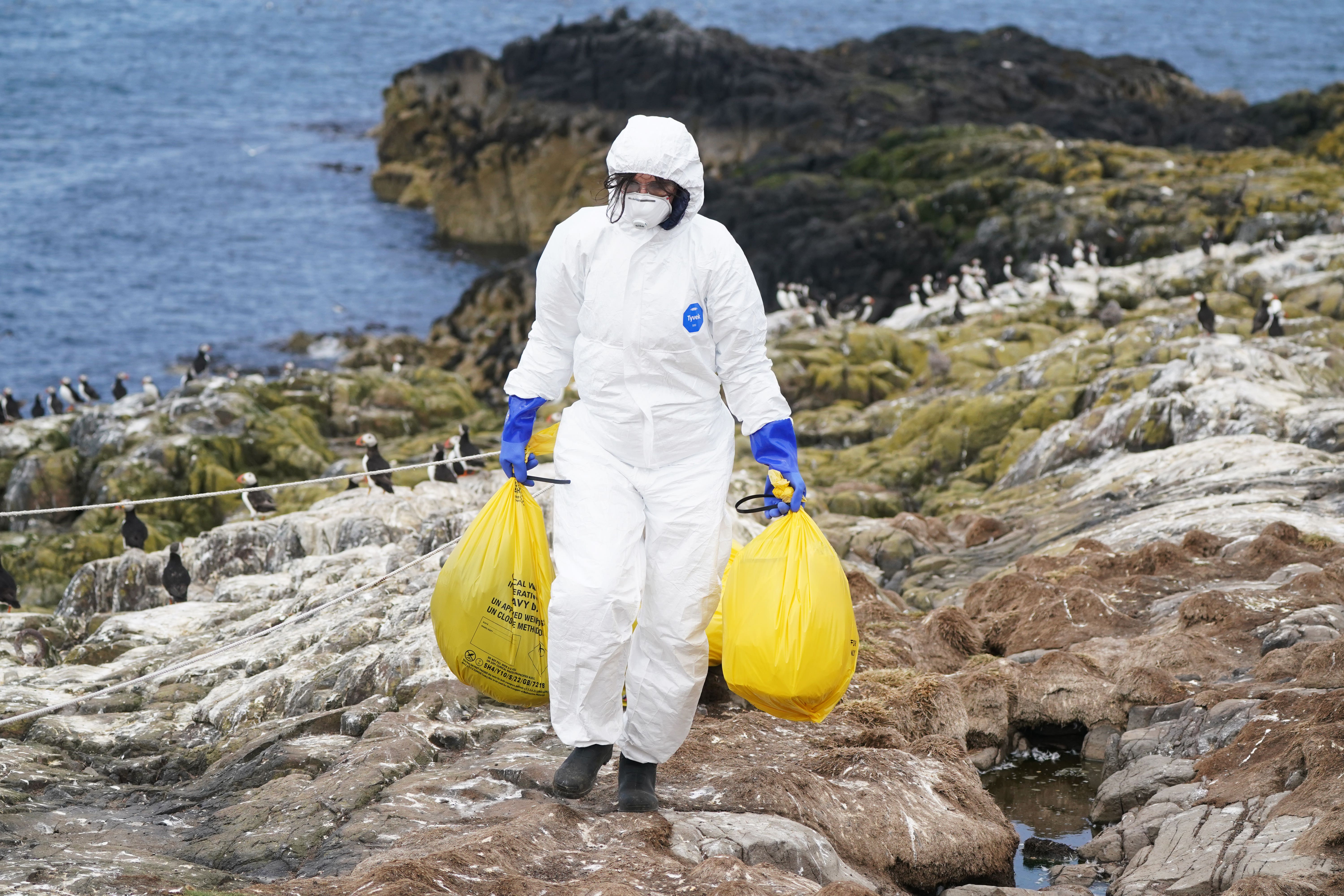More mammals infected with bird flu but risk to humans is low, experts say
The UK Health Security Agency stressed that, so far, indications are that any passing of flu between mammals is limited.

Your support helps us to tell the story
From reproductive rights to climate change to Big Tech, The Independent is on the ground when the story is developing. Whether it's investigating the financials of Elon Musk's pro-Trump PAC or producing our latest documentary, 'The A Word', which shines a light on the American women fighting for reproductive rights, we know how important it is to parse out the facts from the messaging.
At such a critical moment in US history, we need reporters on the ground. Your donation allows us to keep sending journalists to speak to both sides of the story.
The Independent is trusted by Americans across the entire political spectrum. And unlike many other quality news outlets, we choose not to lock Americans out of our reporting and analysis with paywalls. We believe quality journalism should be available to everyone, paid for by those who can afford it.
Your support makes all the difference.More animals in the UK have been found to be infected with bird flu, though the risk to humans remains low, health experts have said.
Avian flu has been found in 23 of 219 wild mammals collected since October 2021, representing a further nine cases since an update earlier this year, according to a new UK Health Security Agency (UKHSA) briefing.
In addition, bird flu has also been retrospectively detected in a group of 10 captive bush dogs kept in a zoo, from November last year.
In its new briefing, the UKHSA said “there are plausible routes of direct exposure to infected wild birds but investigations into the possibility of mammal-to-mammal transmission are ongoing”.
The UKHSA stressed that, so far, indications are that any passing of flu between mammals is limited.
The UK risk is assessed as level 3, which stands for “limited mammalian transmission”.
Of the 23 cases reported, nine were in Scotland, 12 in England, and two were in Wales.
The animals include six foxes, six grey seals, five otters, three harbour seals, two dolphins and one harbour porpoise.
As part of its briefing, the UKHSA has also modelled three scenarios of how bird flu could spread in the early stages between humans.
It stressed these are not predictions and have only been created to aid planning.
In the scenarios, the reproduction number (R) of the virus (which is the average number of other infections produced by a single infected person) is set at between 1.2 and 2.
The briefing said all scenarios are considered severe compared to the most recent flu pandemic in 2009.
In scenario 1, the infection-fatality rate (IFR) is around 0.25%, similar to that of Covid-19 in autumn 2021.
This means one in 400 infected people would die.
The latest evidence suggests that the avian influenza viruses we’re seeing circulating in birds do not currently spread easily to people
Scenario 1 also has an infection-hospitalisation rate (IHR, or the number of people who will be admitted to hospital per infection) of 1%.
This means for every 100 people who are infected, one will be admitted to hospital.
Scenario 2 is more severe, with an IFR of around 2.5% and an IHR of 5%.
In scenario 3, the IHR is 10%, with IFR 5%, similar to the type of outbreak seen with Sars.
The briefing says the H5N1 flu virus being seen in birds and mammals can “successfully infect mammals and humans with high levels of direct exposure (for example, scavenger mammalian species, humans working closely with birds)”.
Data from the World Health Organisation shows that from January 2003 to January 2023, there have been 868 cases of human infection with H5N1 avian flu virus around the world.
Dr Meera Chand, deputy director at the UKHSA, said: “The latest evidence suggests that the avian influenza viruses we’re seeing circulating in birds do not currently spread easily to people.
“However, viruses constantly evolve and we remain vigilant for any evidence of changing risk to the population.
“It is right that we prepare for the emergence of novel influenza viruses and we are working with partners to ensure that we have the tools and capabilities in place for these and other emerging infections.”
Professor Ian Jones, virologist at the University of Reading, said: “The latest technical briefing concludes that the risk of human infection by the current H5N1 virus has not increased.
“This is because, although there is still virus around, there is no evidence of the virus being any more adapted to human transmission now than was observed previously.
“Consistent with this, the number of avian flu infections in people remains low, with no indication of an upward trend.
“The illustrative scenarios, while plausible, are still very speculative. Their usefulness is that they provide a chalking out which relates to planning, but as the actual numbers for R and the level of severity are not known, they are no more than thinking aloud at the present time.”
Among those working on the avian influenza technical group informing the UKHSA’s bulletin are professors Wendy Barclay and Neil Ferguson from Imperial College London.
Prof Ferguson and colleagues created modelling scenarios regarding Covid-19 that were used by the Government in the early stages of the Covid pandemic.